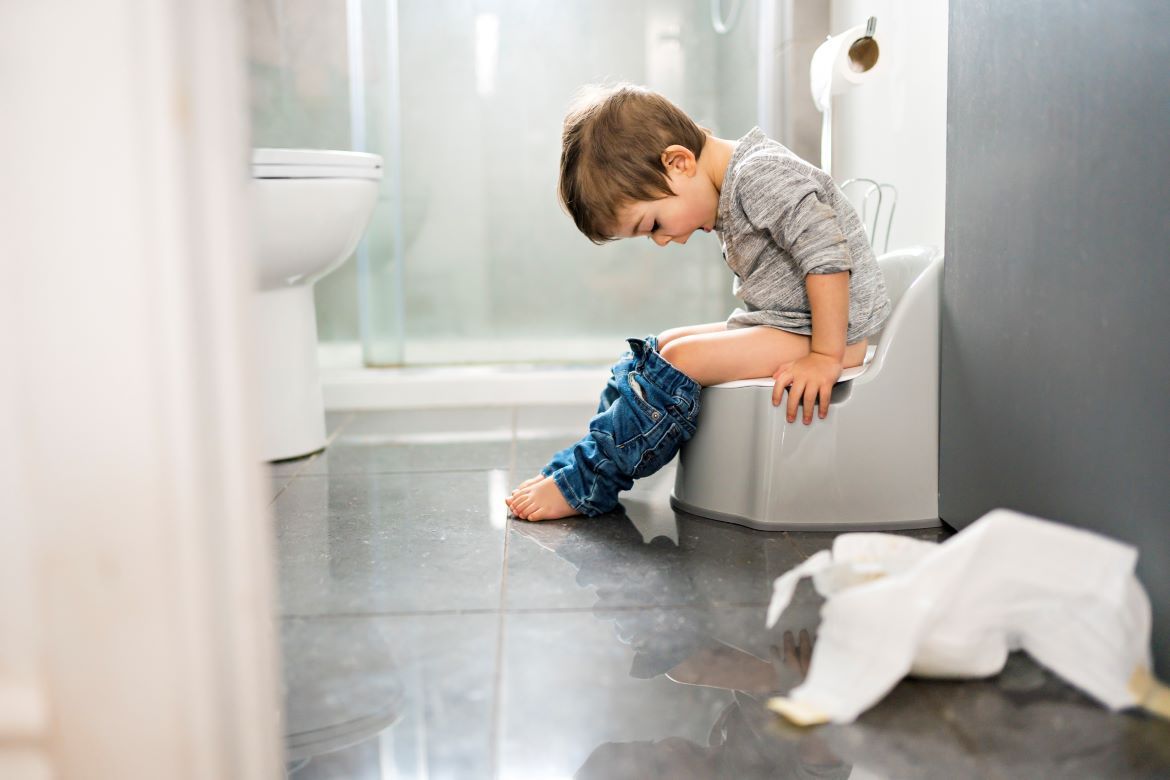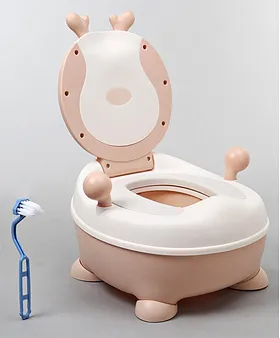Potty Training Products: A Guide to Essential Gear for Success
Potty training is a significant milestone for both toddlers and parents. It’s a journey of independence, accomplishment, and yes, sometimes a few messes along the way. While encouragement, patience, and a positive attitude are key ingredients for success, having the right potty training products on hand can make the process smoother and more enjoyable for everyone involved.
Essential Gear for Potty Beginners
Here’s a breakdown of some essential potty training products to consider:
1. Potty Chairs:
- Types: There are various potty chair designs available, including standalone chairs, chairs with built-in splash guards, and ones that convert into step stools for later use.
- Benefits: Potty chairs offer a familiar and comfortable place for young toddlers to start their potty training journey. The smaller size and lower seat height compared to a regular toilet can help them feel more secure and in control.
- Considerations: Choose a potty chair with a stable base to prevent tipping and a removable insert for easy cleaning. Opt for one with an easy-to-clean design and comfortable seat material.
2. Training Pants:
- Types: Training pants come in various absorbency levels, offering different levels of protection against leaks. Pull-up style training pants are convenient for toddlers who are gaining independence in dressing.
- Benefits: Training pants provide a sense of security and familiarity similar to diapers, while still allowing your child to feel the wetness. This sensation can help them learn to associate the feeling with using the potty.
- Considerations: Choose training pants that fit snugly but comfortably to avoid leaks. Opt for breathable materials to prevent discomfort, especially during warmer weather. Remember, training pants are not meant to replace diapers completely, but rather as a transitional step.
3. Step Stools:
- Types: Step stools come in different heights, materials (plastic, wood), and with or without slip-resistant grips. Some fold for easy storage.
- Benefits: Step stools help toddlers safely reach the toilet and climb on and off independently, fostering a sense of accomplishment and promoting confidence during potty time.
- Considerations: Choose a step stool with a wide, stable base and slip-resistant grips to prevent wobbling or falls. Ensure the height allows your child to comfortably place their feet flat on the floor while seated on the toilet.
Beyond the Basics: Additional Potty Training Products
Once your child progresses in their potty training journey, you might find these additional products helpful:
-
Toilet Seats: These reducer seats fit on top of a regular toilet seat, making it smaller and less intimidating for toddlers. Look for seats with fun colors or familiar characters to encourage them to use the toilet.
-
Reward Charts: Positive reinforcement is a powerful tool in potty training. Reward charts allow you to visually track your child’s progress and celebrate their successes with stickers or small rewards.
-
Potty Books: Colorful and engaging potty training books can introduce your child to the concept of using the potty in a fun and lighthearted way. Reading these books together can spark conversations, answer their questions, and alleviate any anxieties they might have.
-
Waterproof Mats: Accidents happen, especially during the initial stages of potty training. Waterproof mats placed underneath the potty chair or training toilet can help protect your floors from messes and make cleanup easier.
-
Flushing Wipes: These pre-moistened wipes are specifically designed for cleaning after using the potty. They are gentler on your child’s delicate skin compared to regular toilet paper.
Additional Tips:
- Look for products made with safe, non-toxic materials, especially for younger toddlers who might put things in their mouths.
- Choose products that are easy for your child to use and maneuver independently, promoting a sense of accomplishment.
- Let your child participate in selecting potty training products, allowing them to feel a sense of ownership over the process.
Choosing the Right Potty Training Products for Your Child
With a wide variety of potty training products available, selecting the right ones for your child can feel overwhelming. Here are some factors to consider:
- Your Child’s Age and Development: Some toddlers might be comfortable starting with a potty chair at a younger age, while others might transition directly to using a toilet seat reducer with a step stool.
- Your Child’s Comfort Level: Pay attention to your child’s preferences. If they seem apprehensive about sitting on a potty chair, a toilet seat reducer might be a better option.
- Your Lifestyle: If you’re frequently on the go, a portable potty seat or disposable training pants might be essential items for your diaper bag.
Remember: There’s no one-size-fits-all approach to potty training products. The key is to choose items that suit your child’s individual needs and preferences, creating a positive and successful potty training experience.
Beyond Products: Creating a Potty-Friendly Environment
While potty training products can provide essential support, creating a positive and encouraging environment is equally crucial for your child’s success. Here are some additional strategies to go beyond the products and foster a potty-friendly atmosphere:
1. Make Potty Time Fun and Engaging:
- Decorate the bathroom: Transform the bathroom into a fun and inviting space. Add colorful stickers, pictures of their favorite characters, or even a fun shower curtain.
- Sing songs and play music: Play upbeat music or sing cheerful songs during potty breaks. This can create a positive association with potty time and make the experience more enjoyable for your child.
- Read potty training books: Keep a variety of engaging and age-appropriate potty training books on hand. Read them together regularly to introduce the concept of using the potty in a relatable and lighthearted way.
- Invest in a potty timer: Set a timer for short intervals (10-15 minutes) and encourage your child to sit on the potty, even if they don’t go. This can help establish a routine and make potty time feel less daunting.
2. Encourage Communication and Openness:
- Talk openly about potty training: Use simple and positive language to explain the process of using the potty. Answer their questions honestly and address any fears or anxieties they might have.
- Celebrate their efforts: Celebrate every milestone, big or small, with enthusiasm and praise. This positive reinforcement motivates your child and encourages them to continue trying.
- Avoid harsh criticism or punishment: Accidents are inevitable during potty training. Avoid getting frustrated or using harsh words or punishment. Instead, focus on offering gentle reminders and encouraging them to try again next time.
3. Create a Consistent Routine:
- Establish a regular potty schedule: Offer your child frequent opportunities to use the potty throughout the day, especially after waking up, before bedtime, and after meals and drinks.
- Maintain consistent routines: Consistency is key in potty training. Stick to a predictable routine for potty breaks, mealtimes, and nap times. This helps your child’s body adjust and anticipate potty time.
4. Lead by Example:
- Talk about your own bathroom habits: Let your child see you using the toilet and talk openly about the process in a positive way. This can help normalize potty training and alleviate any anxieties they might have.
- Read books about using the potty together: Reading books about characters using the potty can not only be entertaining but also serve as a subtle way to introduce the concept and normalize it.
5. Personalize the Experience:
- Allow your child to choose some potty training supplies: Let your child pick out their own potty chair, training pants, or step stool. This sense of ownership can increase their engagement and excitement about using the potty.
- Create a reward chart (optional): If your child responds well to positive reinforcement, consider creating a simple reward chart. Use stickers or small rewards to celebrate their successes and encourage continued progress.
 By combining the right potty training products with a positive and supportive environment, you can equip your child for success on their potty training journey. Remember, every child develops at their own pace. Celebrate each milestone, big or small, and most importantly, be patient and encouraging throughout the process.
By combining the right potty training products with a positive and supportive environment, you can equip your child for success on their potty training journey. Remember, every child develops at their own pace. Celebrate each milestone, big or small, and most importantly, be patient and encouraging throughout the process.

